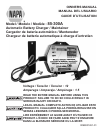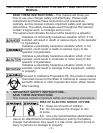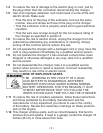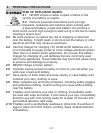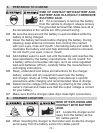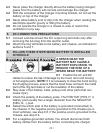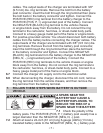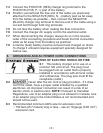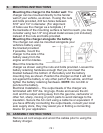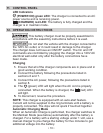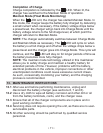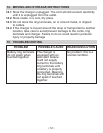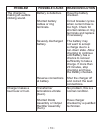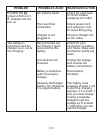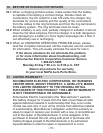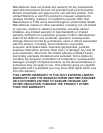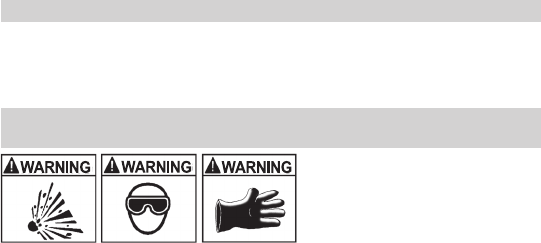
• 6 •
4.3 Never place the charger directly above the battery being charged;
gases from the battery will corrode and damage the charger.
4.4 With the exception of the charger mounting bracket, do not set the
battery on top of the charger.
4.5 Never allow battery acid to drip onto the charger when reading the
electrolyte specic gravity or lling the battery.
4.6 Do not operate the charger in a closed-in area or restrict the
ventilation in any way.
5. DC CONNECTION PRECAUTIONS
5.1 Connect and disconnect the DC output ring terminals only after
removing the AC plug from the electric outlet.
5.2 Attach the ring terminals to the battery and chassis, as indicated in
sections 6 and 7.
6. FOLLOW THESE STEPS WHEN BATTERY IS INSTALLED
IN VEHICLE
A SPARK NEAR THE
BATTERY MAY CAUSE A
BATTERY EXPLOSION. TO
REDUCE THE RISK OF A
SPARK NEAR THE BATTERY:
6.1 Position the AC and DC
cables to reduce the risk of damage by the hood, door and moving
or hot engine parts. NOTE: If it is necessary to close the hood during
the charging process, ensure that the hood does not touch the metal
part of the ring terminals or cut the insulation of the cables.
6.2 Stay clear of fan blades, belts, pulleys and other parts that can
cause injury.
6.3 Check the polarity of the battery posts. The POSITIVE (POS, P, +)
battery post usually has a larger diameter than the NEGATIVE
(NEG, N, -) post.
6.4 Determine which post of the battery is grounded (connected) to
the chassis. If the negative post is grounded to the chassis (as in
most vehicles), see step 6.5. If the positive post is grounded to the
chassis, see step 6.6.
6.5 For a negative-grounded vehicle: You should disconnect both
battery cables from the battery before connecting the charger



